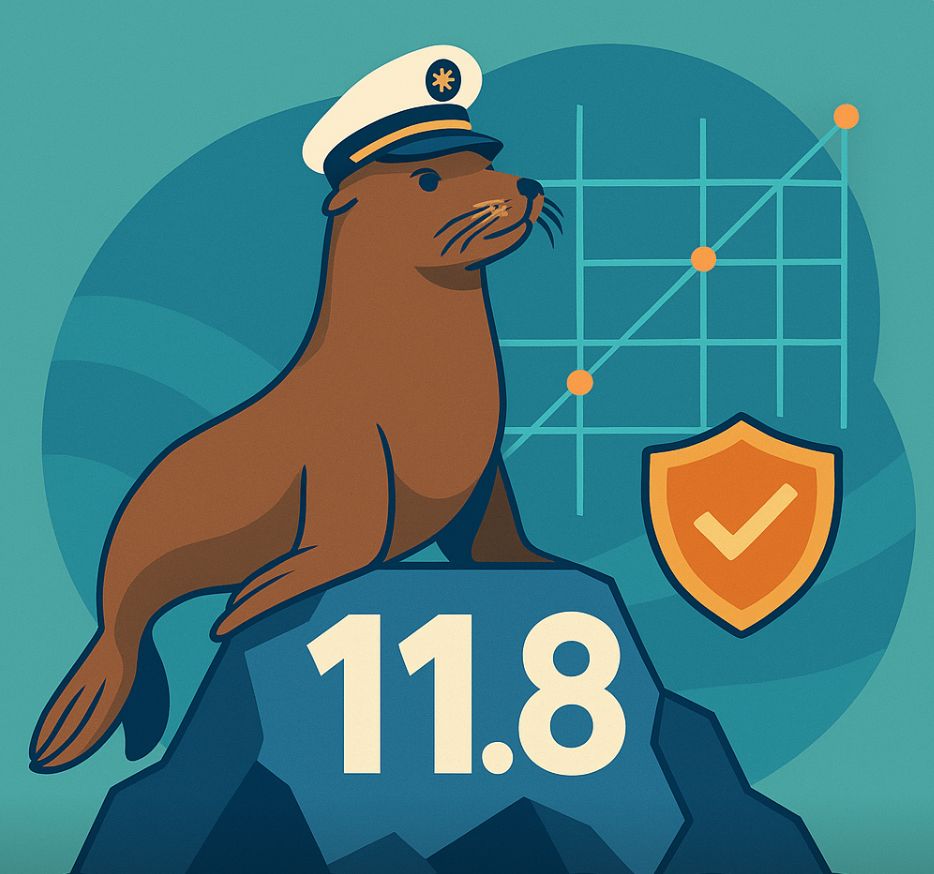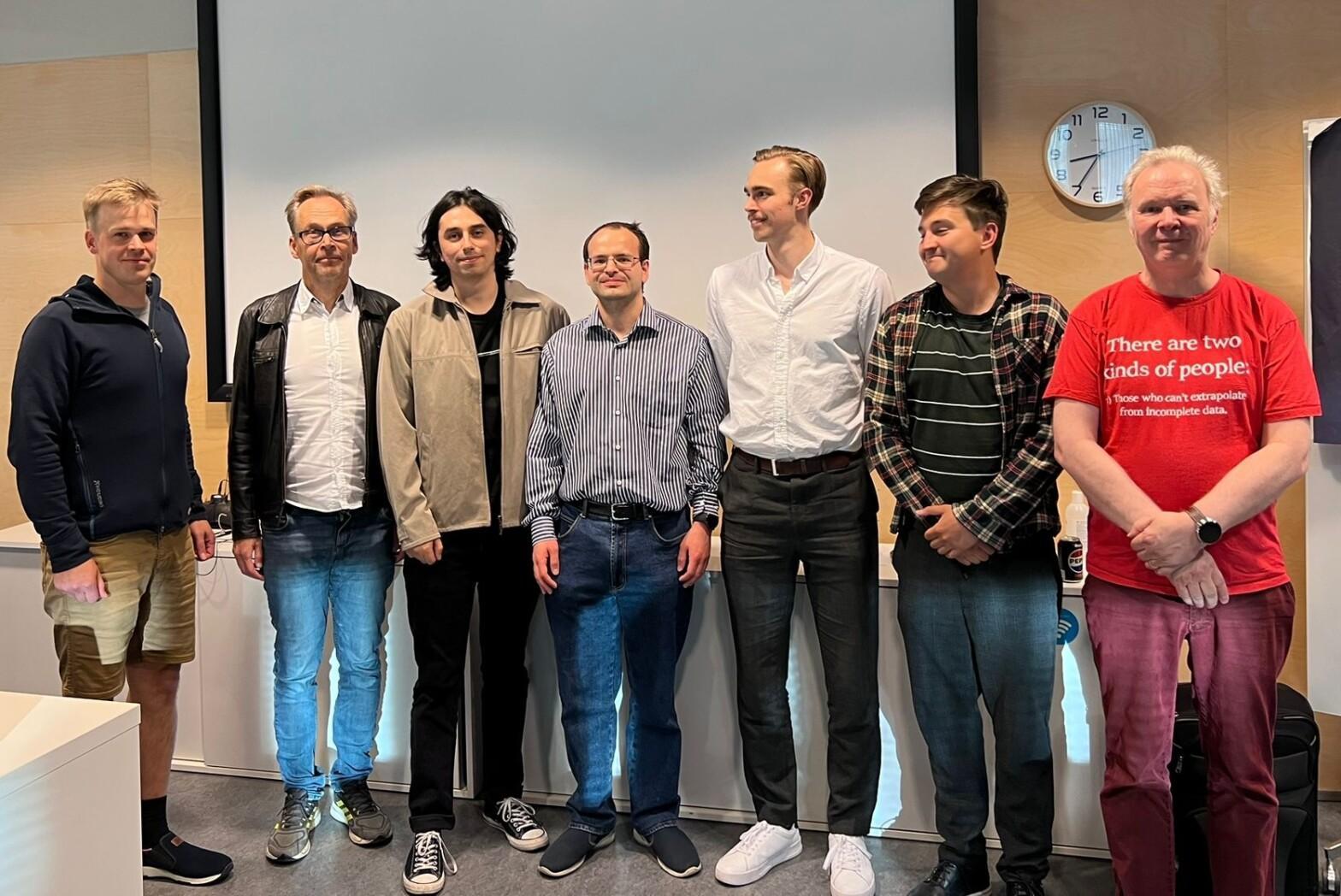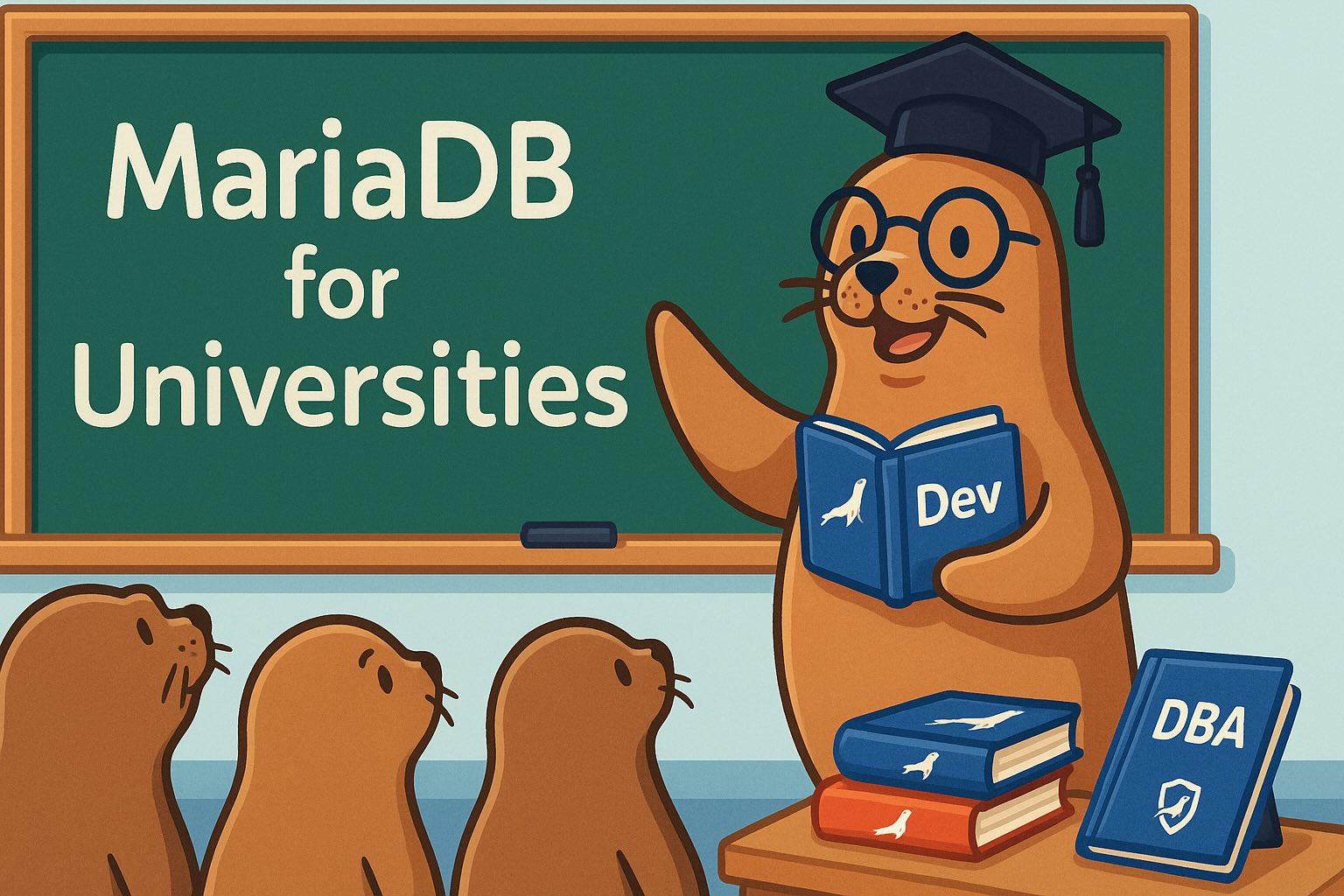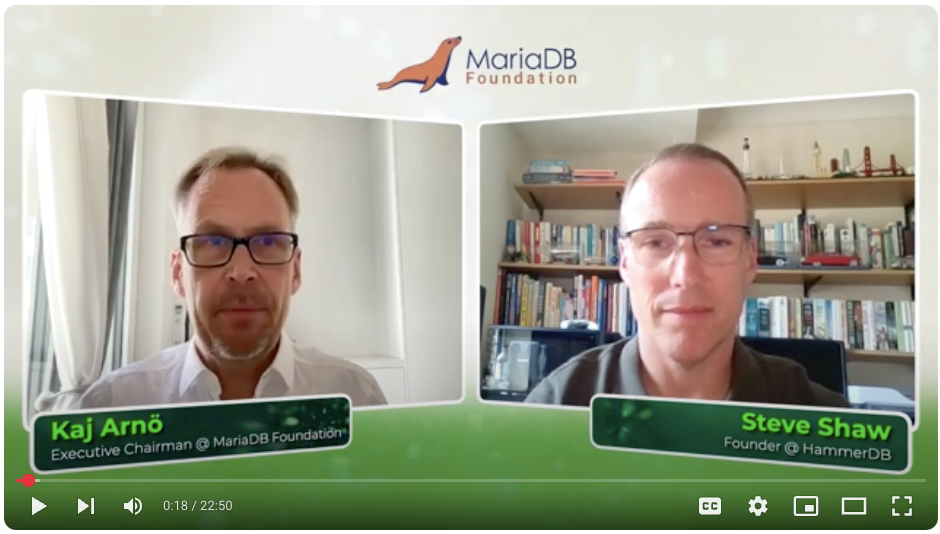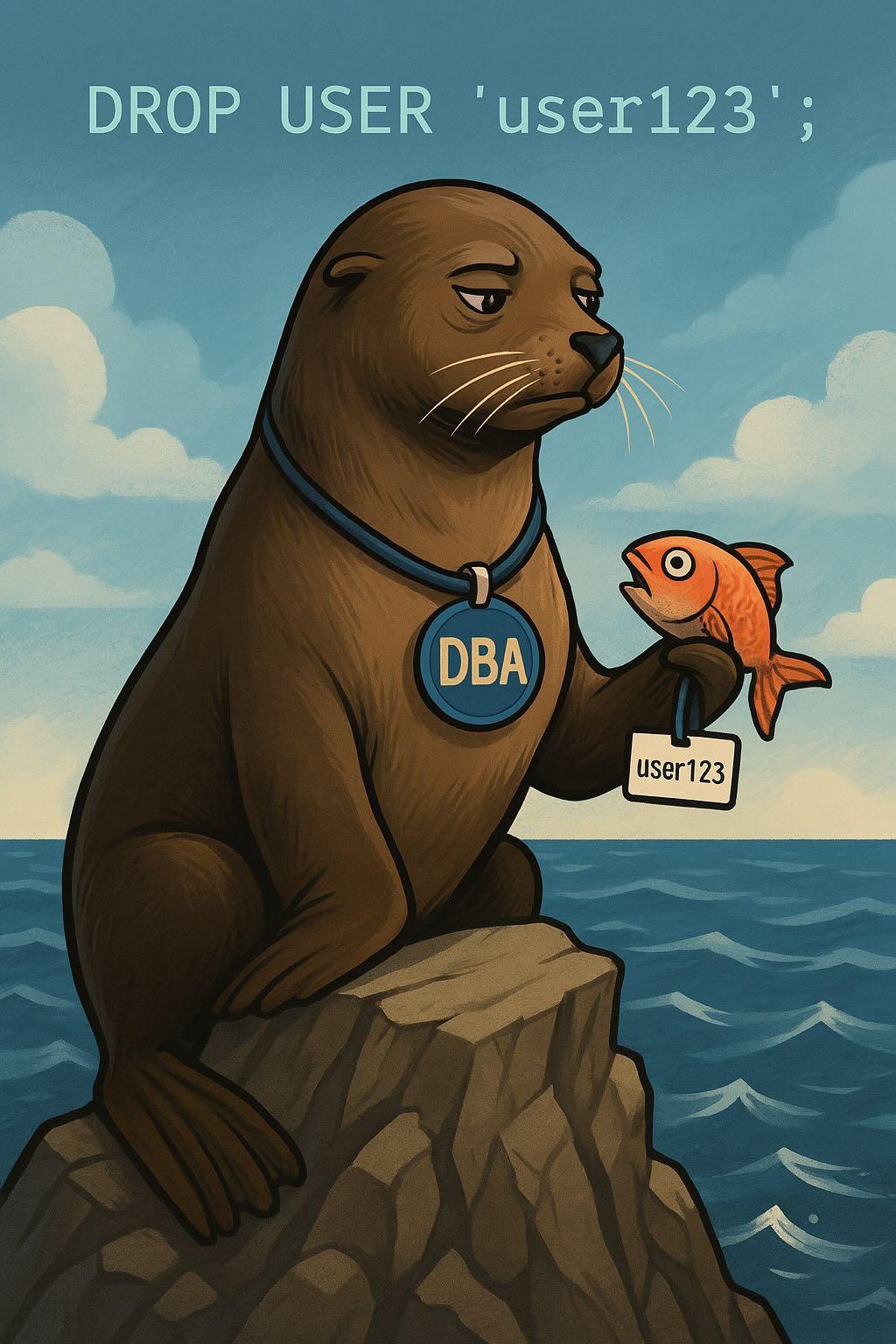Author Archives: Kaj Arnö
Now is a good time to upgrade to the freshest MariaDB Server. MariaDB 11.8 is the yearly long term support release for 2025. It’s the first LTS with support for MariaDB Vector, and it includes a number of other updates based on user requests. You can seamlessly upgrade to MariaDB 11.8 from MariaDB 11.4 (the previous LTS) or any older release, back to MariaDB Server 10.0 or earlier, including most versions of MySQL Server.
MariaDB 11.8 LTS includes everything added since 11.4, incorporating changes from 11.5, 11.6, 11.7, as well as new features not released before.
…
One of the most fun and rewarding activities the past two-three months has been working with the participants in the Helsinki Python hackathon on MariaDB Vector. Robert already blogged about the outcome and the award winners. Let me reflect a bit more on the entire process, as it has inspired us to do more of the same: Scaling out from Finland to other hackathons.
The goal: MariaDB Vector contributions
Our goal was to solicit contributions related to MariaDB Vector, but we didn’t have precise ideas about exactly what type of contributions or how we should arrange the hackathon.
…
Continue reading “Helsinki Python Hackathon – a role model for future MariaDB hackathons!”
We have long had a vision: that learning relational databases with MariaDB should be accessible to everyone — students, educators, and self-learners alike. Today, MariaDB Foundation and MariaDB plc together take a major step forward in realizing that vision.
A Shared Effort for Open Education
MariaDB plc has generously released substantial professional training materials for academic and other non-commercial usage under an open source license. These materials are now publicly available on our GitHub repository at https://github.com/MariaDB/mariadb-for-universities/, and also accessible in a reader-friendly format at https://uni.mariadb.org.
The materials are structured to guide users from beginner to intermediate levels, and are intended for incorporation into university courses or for self-paced study.
…
Continue reading “Releasing MariaDB for Universities: Lecture Materials for a New Generation”
Right after the recent MariaDB Meetup in London, I had the pleasure of sitting down with Steve Shaw – founder and CEO of HammerDB, former Principal Engineer at Intel, and board member of the MariaDB Foundation. Steve delivered the keynote talk at the event and has a unique perspective on performance, open source, and the intersection between commercial and community-driven database development.
This blog post captures our conversation – a dialogue between two people passionate about open source and database performance. We talk about Steve’s transition from Intel to HammerDB, his relationship with MariaDB Corporation, the nuances of performance testing, and what lies ahead for the HammerDB and MariaDB communities.
…
Continue reading “Open Source Performance, Benchmarks and MariaDB: A Conversation with Steve Shaw”
March was a busy month in the world of MariaDB!
Let’s explore the progress through the lens of the Six Goals for 2025, introduced in January.
Board Meeting 1/2025: New Executive Chairman, new CEO
But before we dive into that, let me briefly highlight developments from the two most recent Board Meetings. In the Report from the Board blog post about the late February meeting, I already noted a key organisational change:
- I am transitioning my role to be Executive Chairman, providing the overall leadership vision for the transformation of the Foundation and expanding the Foundation’s presence and influence in the industry.
…
Continue reading “This month in MariaDB Foundation: Mar 2025”
Shortly, we will start coding a task, for which we would appreciate your input: How would you like to DROP USER?
Why do we ask?
DROP user (originating in MySQL in 2004) always used to just drop the account from the privilege tables, but left all existing connections active. You can argue that this was questionable in 2004, but it’s really unexpected and confusing in 2025, with MariaDB being ubiquitous as it is.
So now we’re considering changing it.
But changing a 20-year-old behavior cannot be done lightly. We want to ask
you, our users, what would you prefer DROP USER to do.
…
Scratch you own itch, and help others while at it!
Why do people contribute to Open Source projects?
The question is as old as Open Source and its predecessor Free Software: Why do people contribute? We re-asked the oldie-but-goodie, and got results that confirm the old adage about scratching your own itch.
Fixing work or personal needs
The most popular answer? Fixing work or personal needs. It got 44 %, nearly half the votes. You simply need to get the job done, and there is an Open Source project that almost does it already.
…
We live in a world where national interests intertwine with IT vendor interests. Interest is currently booming in “European Alternatives“. I’m happy to note that MariaDB Server is unaffected by considerations related to protectionism. In fact, choosing Open Source protects the user – an individual, an organisation, or a government – from protectionism itself.
Licensing prevails over national interests
Politicians come and go. National interests prevail a bit longer than individual politicians.
Companies also evolve, get acquired and merged across national borders.
Licensing of already released software remains constant across mergers and acquisitions.
…
